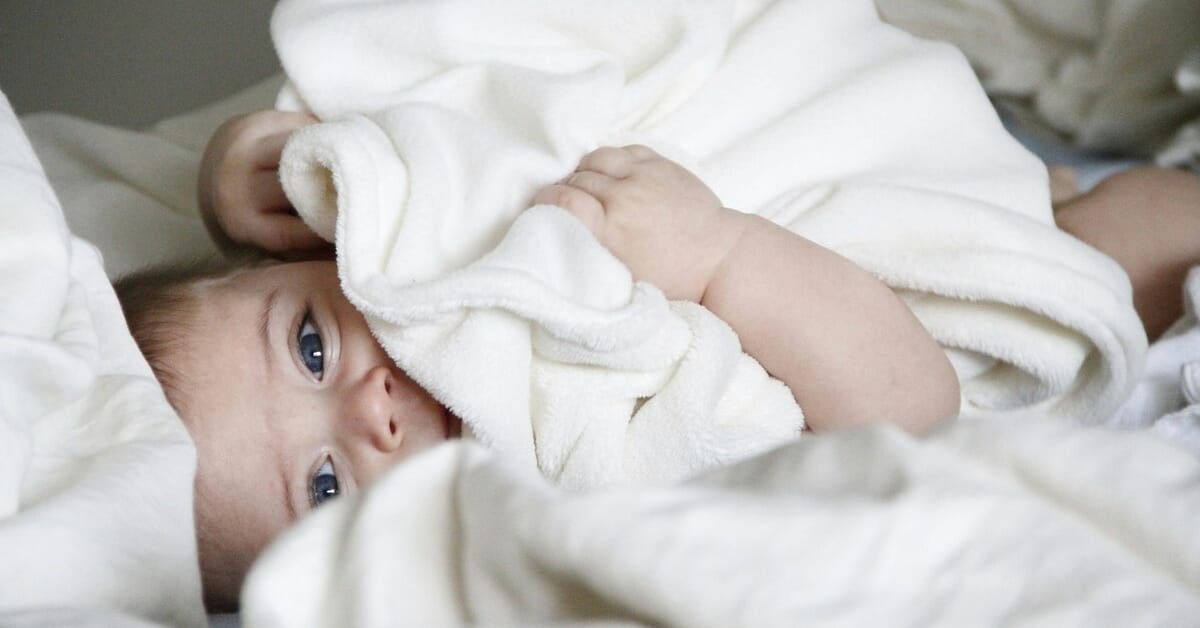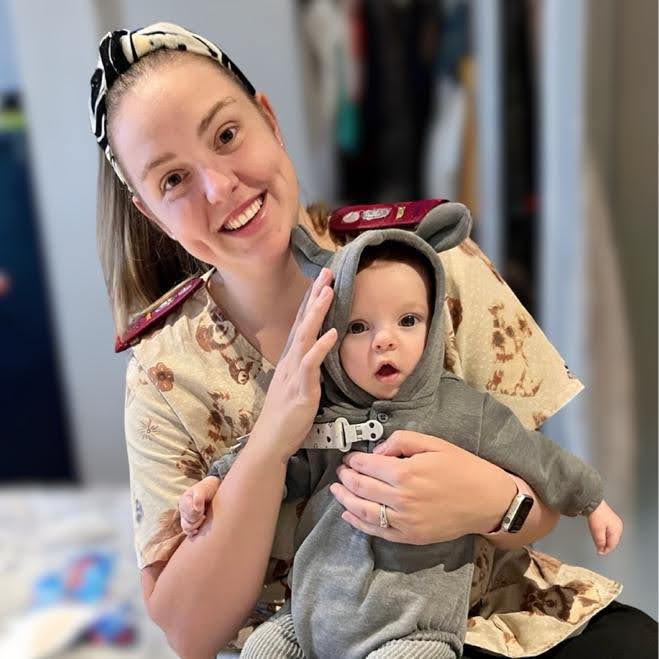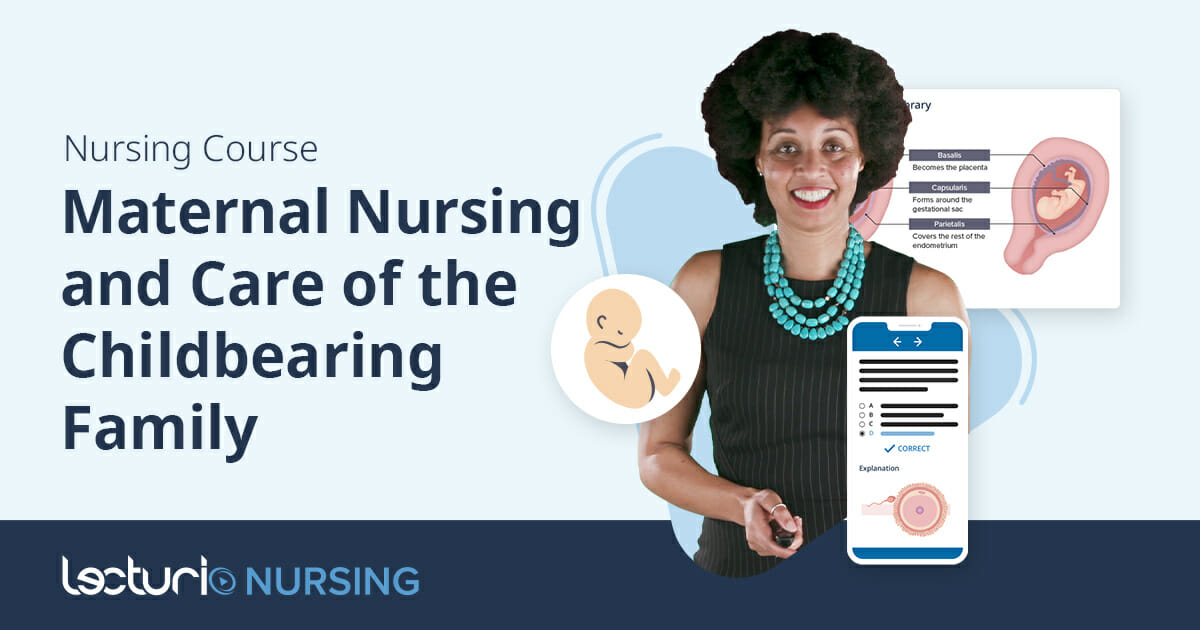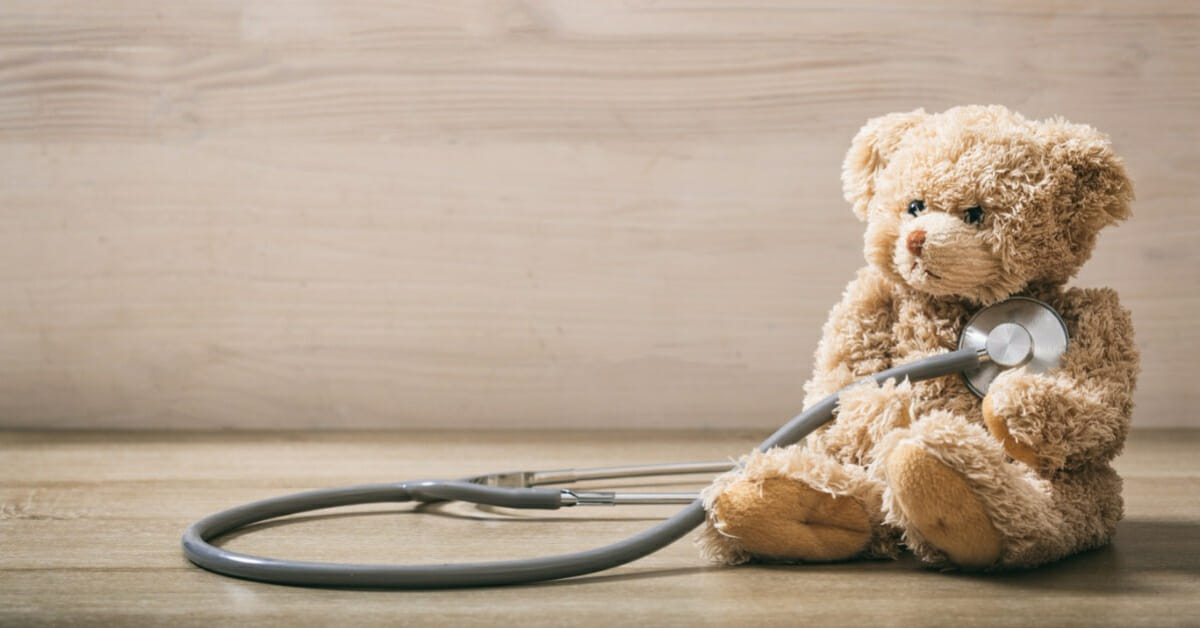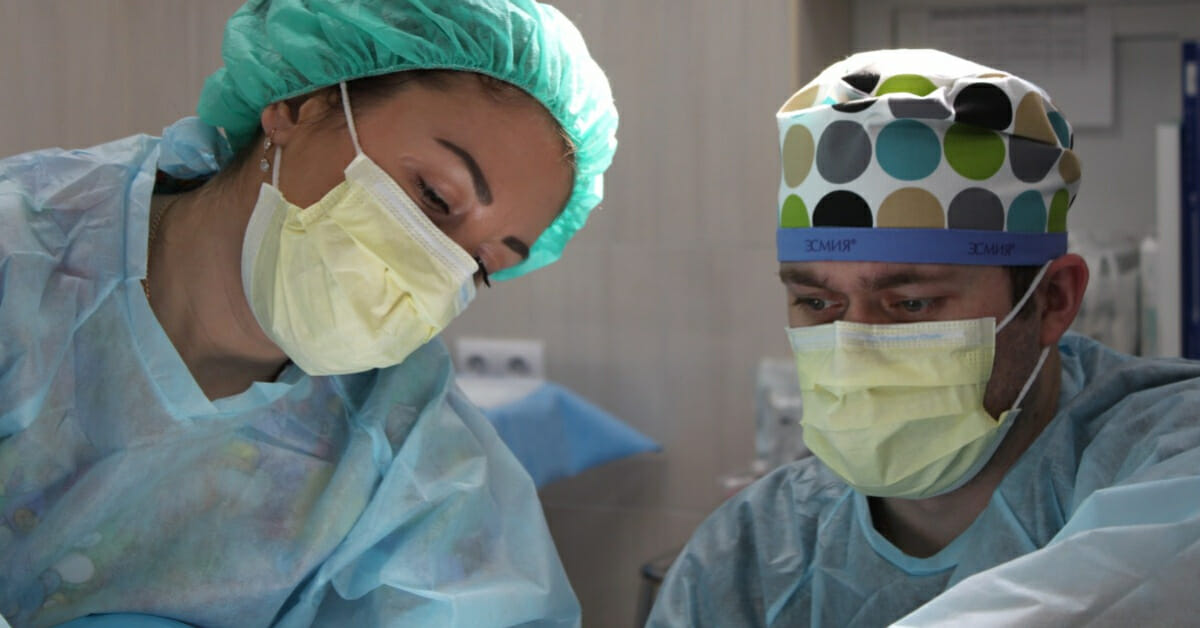What I have come to realize while working with pregnant moms and tiny babies is that everything about a newborn baby is underdeveloped. This is the reason why your tiniest patients are so susceptible to hypothermia and temperature fluctuations.
Understanding Neonatal Hypothermia
What is neonatal hypothermia?
According to the World Health Organization’s “Thermal Protection of the Newborn: A Practical Guide” hypothermia (low body temperature) occurs when a baby loses more heat than what they can produce. Because of this, their body temperature drops substantially. Having a low body temperature can cause a whole host of other problems.
Low and normal newborn temperatures
The same guide defines normal and abnormal temperatures in newborn babies as follows:
| Temperature range | Classification | Action |
| 97.7-99.5˚F | Normothermic | No action |
| 96.8-97.5˚F | Cold stress | Concerning – keep a close eye |
| 89.6-96.6˚F | Moderate hypothermia | Warm baby |
| < 89.6˚F | Severe hypothermia | Poor prognosis – Immediate care by a skilled professional |
Take the Course: Maternity Nursing
Cover all aspects of caring for the childbearing family with the all-in-one online course.
The Consequences of Neonatal Hypothermia
The short and the long of the consequences is this: a baby who is cold starts to develop problems with almost all of their organ systems.
Their heart rate slows, they begin to breathe more quickly, they feed poorly, their blood sugar drops. If a small baby remains cold for extended periods of time, it can also lead to weight loss or slow weight gain. Finally and certainly most seriously, a baby who is not diagnosed and treated quickly and appropriately can die (although the risk of dying from hypothermia alone is low, it is usually as a consequence of one of the other complications).
Causes of Low Temperature in Newborns
As a nurse, it is important for you to understand the contributing factors so that you know what to look out for, and what to avoid to keep our neonatal patients warm.
Insufficient temperature regulation
Some of the main reasons for newborns having poor temperature regulation include:
- Large surface area to body mass ratio
- Not a lot of fat deposits under their skin
- Underdeveloped skin
- Plenty of body water
- Metabolism is underdeveloped
- Blood is not flowing as it should yet
Environmental temperature at the place of delivery
As I’m sure you’ve now realized, the environmental temperature is incredibly important. While delivery rooms are usually pre-heated (we’ll discuss this in a minute), if a mom were to give birth in the car or at home, for example, there may not be the adequate heating required to keep the baby warm.
In South Africa, where I work and stay, we have what is called loadshedding. This means that sections of our electricity grid are switched off according to a schedule 24 hours a day. This means that any one place could go as long as 16 hours a day without electricity. No one is exempted from this crisis, including hospitals. This is a real-life example of how difficult it is to ensure a baby is kept warm, something that is quite difficult to do without electricity.
Another example of a birthing environment that is relatively cold is theatre. Theatres commonly keep the temperature relatively low to prevent spread of infection. This means that a baby who is born via caesarean section may also be at risk of developing neonatal hypothermia.
Gestational age and birth weight
One of the biggest at-risk groups are premature and low-birth-weight babies. These babies are less developed than term and average-weight babies. If you know that the baby, who is going to be delivered, is preterm or has a condition like intrauterine growth restriction, make sure that you are well equipped and prepared to warm the baby up and keep that baby warm.
Babies are wet
If you think about how you feel after climbing out of a cold pool (even if it’s a hot summer’s day), then you might have some idea how a newborn feels after birth.
A baby has been in warm cozy water for 9 months and suddenly they’re in the cold world. This is one of the reasons why babies start to rapidly lose body temperature after birth. Some countries also bathe babies directly after birth which further cools them and keeps them away from their mother’s warm arms for even longer.
The best practice for a newborn is to remain with their mother doing skin-to-skin contact and breastfeeding for at least an hour after birth (known as the golden hour). Prevention of hypothermia is one of the main reasons why skin-to-skin or kangaroo care is so strongly encouraged worldwide.
Inappropriate dressing for the weather
The last factor we’re going to touch on is babies who are inappropriately dressed for the weather. Where I’m from, we have incredibly mild winters and so I’m no expert on those puffer suits for babies, but I was always taught that the rule of thumb is baby should wear what mommy is wearing +1.
So, for example, if it is summer and you are wearing a short-sleeve shirt, the baby should have a short-sleeve vest and a short sleeved babygrow. Same for winter – if you are wearing a vest, a jumper, and a puffer jacket, then the baby should be wearing a vest and leggings with socks as a first layer, a long baby grow, and then a warm body suit or puffer babygrow as the outside layer. They should also have a cap, booties. and mittens on.
Practical Strategies for Newborn Temperature Control
Now that you know what can cause neonatal hypothermia and what can contribute to it, what can you do so to ensure that your new little patients are at a lower risk for developing it at birth? There is plenty that you can do practically to ensure that your babies are warmly welcomed into this world.
Pre-warming the delivery room and equipment
This is something that is easily done for a mom who has been labouring for a while in your ward. When you can tell that she is getting closer to delivery, you can turn the heat up in the delivery room and start to heat up the baby-warmer or incubator. Make warming one of your top priorities when you prepare the delivery room. Ensure that the receiving blankets are also prewarmed.
Immediate drying and skin-to-skin after birth
Once the baby is born, make sure that they are dried off quickly and immediately placed on the mothers chest for skin-to-skin. Skin-to-skin is described as placing the baby out of the womb directly onto the mothers bare chest. Skin-to-skin or kangaroo care offers the newborn baby a whole host of benefits and helps to initiate breastfeeding. Thermoregulation of the newborn is one of the main benefits. Remember to cover the baby in a warm blanket once placed on the mothers chest, to make sure that baby stays warm.
Skin-to-skin can also be done in theatre and in the days and weeks after giving birth to prevent hypothermia of the slightly older newborn.
Research has also found that skin-to-skin has similar benefits for the baby’s thermoregulation if performed by the father. So, if mommy is unwell or unable to provide skin-to-skin, the father or birth partner can do it too!
Ensuring appropriate clothing and bedding
Once the adrenaline and rush of birth has passed, the baby has been weighed and measured, and mommy has initiated breastfeeding, the baby should be warmly dressed. Ensure that the outfit is appropriate for the temperature and remember that a baby loses a lot of heat through their head, hands, and feet. Make sure that baby has a cap, mittens, and socks or booties – especially in the first few days of life.
The baby should also be warmly wrapped in a blanket that is appropriate to the environmental temperature (overheating is also a thing).
Parent education
Nurses and education run almost synonymously – I think that patient education is almost one of our most important functions as nurses.
Take time to discuss keeping their baby warm before discharge. While they don’t need to understand the full in-depth explanation of the causes and consequences, it would help for them to understand the risk factors and practical tips for keeping their babies warm once they go home.
Make sure parents know how to keep their baby warm for bath time, sleep time, and when taking their baby out of the house.
Monitoring and Assessing Babies
Now that you know what causes hypothermia and what you can do to avoid it, we’re going to look at how to monitor your baby patients for it.
Vital signs
If you are working in the neonatal unit or nursery, frequently monitoring all of the babies’ temperatures is an important task. Earlier on, I spoke about how WHO classifies the temperatures of babies. Make sure that you are taking an axillary temperature every hour or two, and that you promptly report any concerns that you may have to a senior staff member.
Observing for signs of hypothermia
While you may have a set time for vital sign monitoring, keep a watchful eye for any baby who is presenting with symptoms of neonatal hypothermia. If you’re concerned, there is nothing stopping you from doing a quick temperature check. If you’re lucky enough to be working somewhere where there is a constant temperature monitor, even better!
The following are some of the general symptoms to look out for:
- Blue or cold extremities
- Shivering
- Low sugar
- Lethargy
- Poor feeding
Swift escalation of care if hypothermia is suspected
If you suspect that a baby is hypothermic, it is always best to report this to someone more senior. As you’ve seen, it can be potentially life-threatening if left untreated, so report your findings to the nurse in charge so that he or she can inform the doctor.
It may sound cliché but my motto is always “better safe than sorry”.
Conclusion
If you forget the scientific side of this condition for a second, and just remember the practical elements of care, I think that you could save many patients. Make sure that you are well prepared to keep your new babies warm – as they say: prevention is better than cure. Do all you can to avoid hypothermia, educate your parents, and always report anything that you think seems abnormal.
